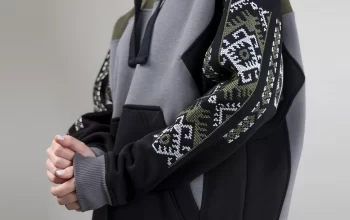After over a year at home, the easing of restrictions means that many of us are beginning to make our way back to our places of work. This means that there are things to think about that we’ve not had to consider for a while, such as how to do the commute. There are also new things to be aware of, like what safety and social distancing measures are in place.
With so much to remember, it can be easy to overlook what we’re wearing in the workplace. But we’ve become so used to our loungewear that it’s likely we need to consider what clothing is suitable now.
As a business owner, you’ll know that your team will need time to adjust to being back in the office. One way to do this might be to reconsider the dress code that applied before.
But why is dressing formally for the office important? Here’s a look at some of the reasons to embrace workwear again and why it’s important to have a dress etiquette as business owner. Here’s a look at the advantages of adopting a more casual approach to workwear.
Comfort is good for business
It’s no secret that a lot of businesses have flourished during the lockdowns. Last year, a survey by the Institute of Directors revealed that 44% of bosses asked found that home working was more effective. It’s likely that one of the reasons for this is largely down to how comfortable workers were.
Dressing in comfortable clothing rather than buttoned-up shirts, trousers and skirts allows workers to relax into their workload. Plus, there aren’t expectations to look a certain way, meaning one less distraction for employees. By allowing staff to wear casual clothing, therefore, you’re likely to see more productivity as they’re in clothing they feel at home in and so they can focus on getting their work done.
Attract talent
A formal dress code is considered outdated by many workers, especially in innovative industries such as tech and marketing.
If prospective employees come in for an interview and see workers dressed in traditional workwear, they may think twice about accepting the position as they’re looking for a working environment that’s more relaxed in its approach. Alternatively, if they see the team dressed casually at work, in T-shirts and jeans, it may make them think twice.
As an employer, you may want to strike the balance between business and leisure, and by relaxing the workwear rules, you could end up hiring top talent.
Less expensive
Formal workwear is typically more expensive than casual clothing. Allowing staff to wear clothing that’s less traditional for the office, they’re more likely to save money, which means they’ll be happier at work – and a happy team means good morale and a more productive team.
Things to note
To introduce casual wear, it’s worth making the rules clear. You don’t have to do away with formalwear entirely. In fact, it’s entirely normal for you to want your team to wear smart clothing for client meetings and in settings where they’re representing the company.
When building this into your revised dress code, you can make this clear. Setting these expectations early on will be good in the long run as staff will know they can dress casually apart from in the circumstances you set out.












